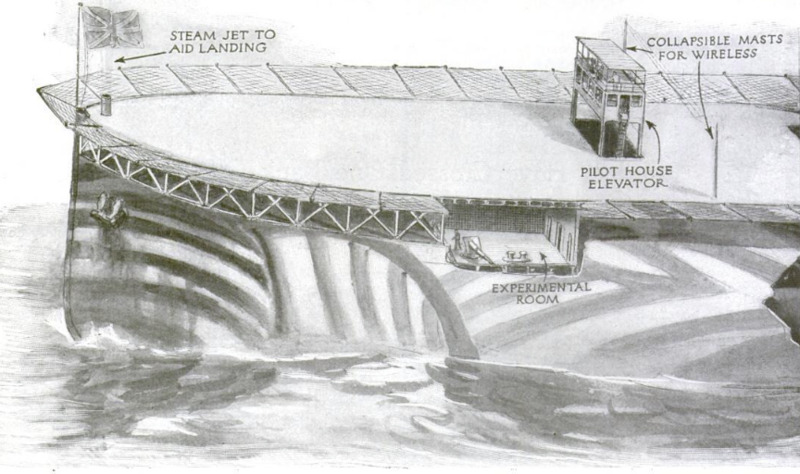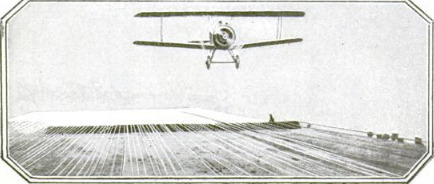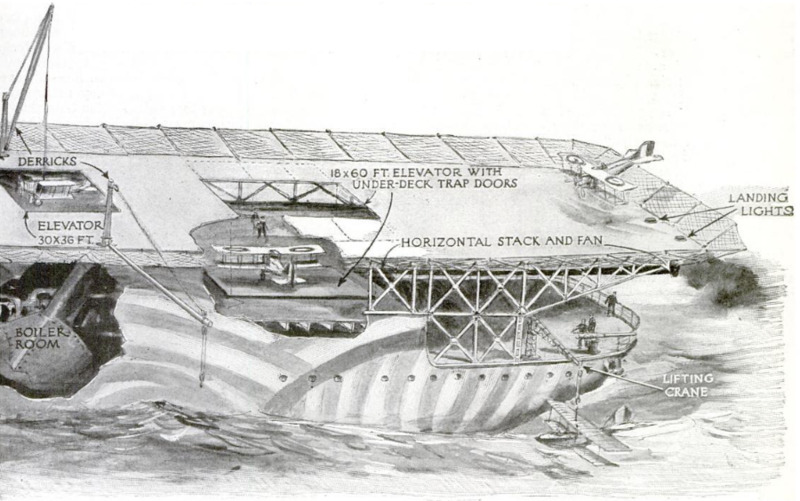The Wonderful 535-Foot Deck of the Sea-Plane Carrier "Argus"
Item
-
Title (Dublin Core)
-
The Wonderful 535-Foot Deck of the Sea-Plane Carrier "Argus"
-
Article Title and/or Image Caption (Dublin Core)
-
The Wonderful 535-Foot Deck of the Sea-Plane Carrier "Argus"
-
caption : THE scaplane-carrier Argus is the latest thing in airplane
mother ships. For her entire length of 535 feet, the flying-
deck upon which the seaplanes start and land is entirely free from
all obstructions of any kind whatever. In this respect the
vessel is more advanced than the battlecruiser Furious, which
bas been described and illustrated in the POPULAR SCIENCE
MONTHLY, because the Furious had such obstructions on
the fiying-deck as her tripod mast, navigating bridge and
The most important of the new ideas worked out to make the
free fiying-deck possible are horizontal smokestacks, which arc
placed directly beneath the flying-deck and discharge their smoke
from the extreme rear of the vessel, where it does not interfere
with the beginning or ending of the scaplanc flights. Another new feature is an elevating pilot-house, the top of which is flush
with the floor of the flying-deck when flights are in progress.
When the vessel is under way, the entire pilot-house is raised high
above the deck on four stilt-like legs, so that the officers may see
to navigate more easily than from the permanent navigating
bridge, located below the flying-deck.
The Argus was not designed as a seaplane-carrier. She was
built in Great Britain for an Italian shipping company, and was
taken over soon after the war broke out. The construction of the
flat flying-deck is the most conspicuous change made in the
design. This deck runs her entire length, and extends for her
clear width of sixty-cight feet. The flying-deck is built above
the highest or top-most deck of the boat as originally designed,
and is mounted on a series of vertical column-like plates with
suitable braces, so that the space between the main-deck and the
fiying-deck is left as open as possible. This was done because
wind-tunnel tests conducted by the Admiralty had shown that
the best results could be obtained when driving the vessel at
speed by leaving the fiying-deck as open as possible. The Argus
has a maximum speed of twenty and three-fourths knots and a
service speed of twenty knots.
The next most noticeable change is the horizontal stacks as
shown by the broken-away sections of the ship. In the space
between decks ordinarily used for cargo a great hangar has been
built, capable of holding twenty service planes of the largest type.
A thermo tank heating unit is provided, also racks on the walls
for torpedoes and radiators to keep the hangar warm, so that men
can work in it comfortably even in the coldest North Sea weather
-
Language (Dublin Core)
-
eng
-
Date Issued (Dublin Core)
-
1919-10
-
pages (Bibliographic Ontology)
-
76-77
-
Rights (Dublin Core)
-
Public domain (Google digitized)
-
Archived by (Dublin Core)
-
Davide Donà
-
Alberto Bordignon (Supervisor)
 Popular Science Monthly, v. 95, n. 4, 1919
Popular Science Monthly, v. 95, n. 4, 1919






